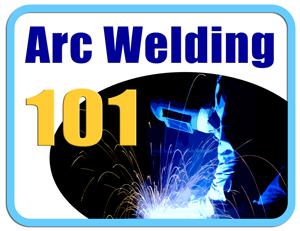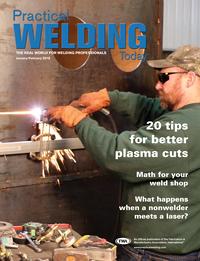- FMA
- The Fabricator
- FABTECH
- Canadian Metalworking
Categories
- Additive Manufacturing
- Aluminum Welding
- Arc Welding
- Assembly and Joining
- Automation and Robotics
- Bending and Forming
- Consumables
- Cutting and Weld Prep
- Electric Vehicles
- En Español
- Finishing
- Hydroforming
- Laser Cutting
- Laser Welding
- Machining
- Manufacturing Software
- Materials Handling
- Metals/Materials
- Oxyfuel Cutting
- Plasma Cutting
- Power Tools
- Punching and Other Holemaking
- Roll Forming
- Safety
- Sawing
- Shearing
- Shop Management
- Testing and Measuring
- Tube and Pipe Fabrication
- Tube and Pipe Production
- Waterjet Cutting
Industry Directory
Webcasts
Podcasts
FAB 40
Advertise
Subscribe
Account Login
Search
Arc Welding 101: Writing a WPS for an unlisted material
- By Paul Cameron
- January 29, 2016
- Article
- Arc Welding
Q: Can you point me in the right direction for procedure qualification record (PQR)/welding procedure specification (WPS) testing of pipe/tube to plate for fillets and partial-joint-penetration (PJP) grooves? The joint is a bevel groove covered by a fillet. The pipe/tube is unlisted AWS D1.1 material welded to A36 and A514.
I know I need to do macroetches, but I am a little confused as to how to get the tensile specimens and side bends for the sizes we are working with. Any thoughts?
A: It’s amazing what you run into, isn’t it? My first WPS experience as a “green” CWI was ensuring that the company I worked for met all the requirements to weld carbon and stainless according to ASME code—something I had zero experience doing. I learned a lot … one mistake at a time.
AWS Qualification Considerations
If I were you, the first thing I would do would be to group the unlisted materials. Get yourself a copy of AWS B2.1, Base Metal Grouping for Welding Procedure and Performance Qualification. In it you’ll see that AWS categorizes your unlisted materials into Groups 1 and 2.
This group of PQRs could get extremely complicated if you qualify to D1.1, so don’t. Qualify to AWS B2.1 and just state that on your documentation.
Qualifying to B2.1 can be as simple as making the weldment the same way you do in production and then cutting and etching the welds to ensure that you meet the size and soundness requirements. You may have to do one for each pipe size (or significant change in part size), but that is a whole lot easier and can be done in pretty short order.
Final Word
I have a lot of experience in writing WPSs for unlisted steels, and take it from me, meeting D1.1 requirements with materials that aren’t the same shape is tough. I would advise against it. It sounds to me like yours is the perfect example as to why the AWS came up with B2.1.
About the Author

Paul Cameron
Braun Intertec
4210 Highway 14 East
Rochester, MN 55904
About the Publication
subscribe now

The Welder, formerly known as Practical Welding Today, is a showcase of the real people who make the products we use and work with every day. This magazine has served the welding community in North America well for more than 20 years.
start your free subscription- Stay connected from anywhere

Easily access valuable industry resources now with full access to the digital edition of The Fabricator.

Easily access valuable industry resources now with full access to the digital edition of The Welder.

Easily access valuable industry resources now with full access to the digital edition of The Tube and Pipe Journal.
- Podcasting
- Podcast:
- The Fabricator Podcast
- Published:
- 04/30/2024
- Running Time:
- 53:00
Seth Feldman of Iowa-based Wertzbaugher Services joins The Fabricator Podcast to offer his take as a Gen Zer...
- Industry Events
16th Annual Safety Conference
- April 30 - May 1, 2024
- Elgin,
Pipe and Tube Conference
- May 21 - 22, 2024
- Omaha, NE
World-Class Roll Forming Workshop
- June 5 - 6, 2024
- Louisville, KY
Advanced Laser Application Workshop
- June 25 - 27, 2024
- Novi, MI
































